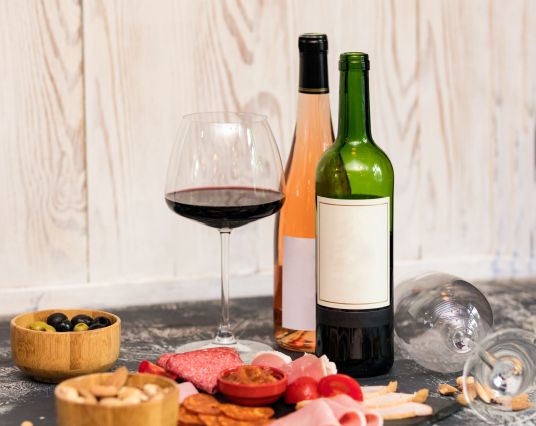Learn
Food & Wine Pairings

Fundamentals
There is greater emphasis on the flavors of wines and how they pair with foods. To enhance your enjoyment of the NTP Tasting and other tastings and meals, we are providing information on pairing in general and how it applies to the NTP wines.
Objective
The objective of pairing wine and food is to select not only good food and a good wine but combinations that go well together. If the combination is right, they enhance each other, sometimes described as 1 + 1 = 3.
An example would be a grilled sirloin steak and an aged tannic Zinfandel wine. They match up perfectly and reinforce each other. The fat in the meat balances the tannin in the wine.You can have good food and a good wine but sometimes they don’t go together. Instead of enhancing each other, one detracts from the other. In that case 1 + 1 = 1.
An example would be a poached egg and a young Bordeaux wine from Medoc. There is nothing in the egg that can stand up to the young tannins in the Bordeaux wine. The wine overpowers the food.
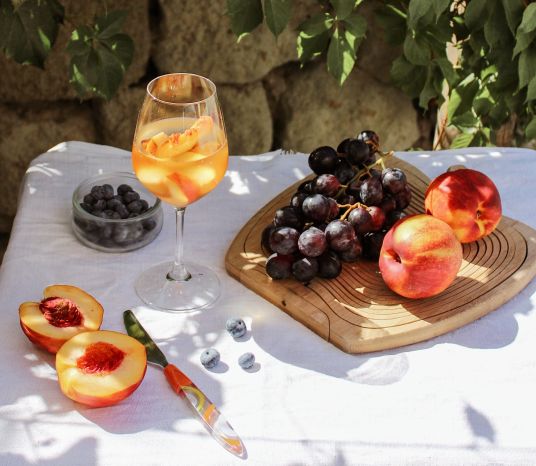
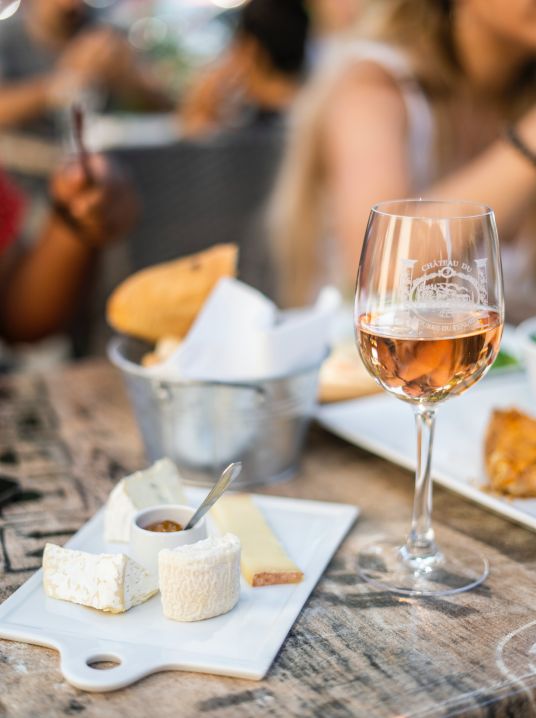
How can Chefs, Sommeliers, and amateurs figure out what food should go with what wine?
The literature is full of recommendations of food and wine combinations. Rather than list the combinations it is better to understand the basic principles of pairing and then apply them to specific situations.
First
The wine and the food should be of the same “weight” in flavor and aroma. Weight refers to intensity and depth. Otherwise one overpowers the other. This is a good general rule for any pairing.
Second
There are two general approaches:
- Pair items which have similar aromas.
- Pair items which have contrasting flavors.
Pair items which have similar aromas.
You can start with either the wine or the food. If you start with a food, identify the dominant aromas and look for a wine that has some of the same aromas. If you start with a wine, identify its dominant aromas and find foods that have some or most of them. An example is Sauvignon Blanc and asparagus. A major component of each aroma comes the pyrazine group of chemicals.
Pair items with contrasting flavors.
Remember that there are four major tastes, salty, sweet, acid, and bitter. Most people agree that umami is number five. Some agree that fat is number six and mineral is number seven.
Two opposite tastes are acid and sugar. An example of a sugar acid combination is German Riesling. Germany is one of the northernmost areas where wine is produced, The grapes tend to have high acid. Winemakers traditionally maintain a small amount of residual sugar in the wine to balance the high acid.
Another example of the same pairing of opposites is sweet and sour Chinese dishes. Recipes exist from 708 AD of sweet and sour dishes in China. They have lasted 1300 years because the Chinese cooks were on to something in their food pairings for each spice.
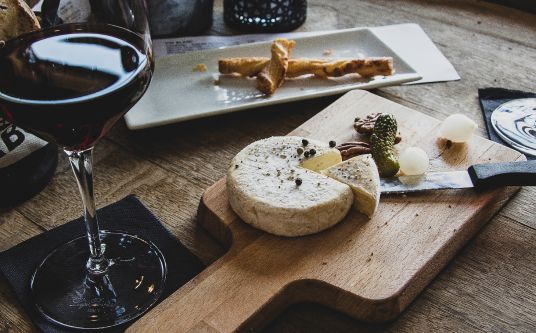
Details and resources on contrasting wine flavors
Fortunately, there has been considerable work done on this subject. Gas chromatograms are used to analyze the aromas in food or a wine in great detail. Food scientists and professionals know precisely what molecules are in any food or drink.
Professional Chefs and Sommeliers use two major sources: Volatile Compounds in Foods Database.
For a mere $8,775 one can purchase a year’s subscription to the database. Perfume and Flavor Materials of Natural Origin by Steffen Arctander is $8,000. Which was first printed in 1960 but still contains valuable information
For us amateurs, there are two more approachable online databases: Food Database Canada.
A data base where you can select a food and find the aroma compounds in it or you can select an aroma and find the foods that have it.
It is largely funded by the Government of Canada. Free Free Free!
A similar database from India, also free: Flavor Database India
A handy YouTube Video explaining: How To Use
Spices
Spices can be used either on a food or in sauces. Food elements can be tied together with sauces. An outstanding book on Spices is the book Spice by Dr. Stuart Farrimond. The author is a M.D. who specializes in food science. His book contains two pages on each spice, identifying the four major aroma compounds and suggesting what foods contain the same compound.
A page for fennel is pictured below. It shows that the dominant aroma is anisole, which is also present in anise and licorice. He selects food partners for each spice.
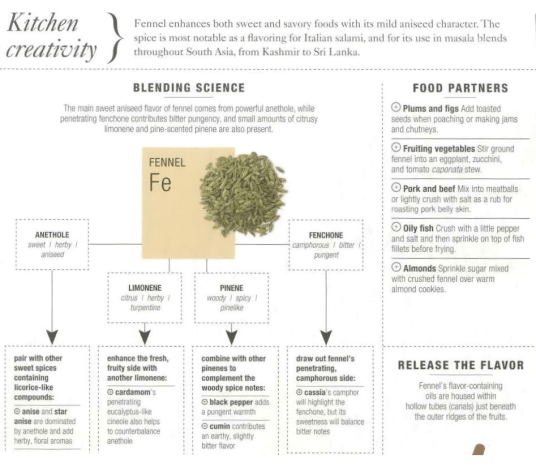
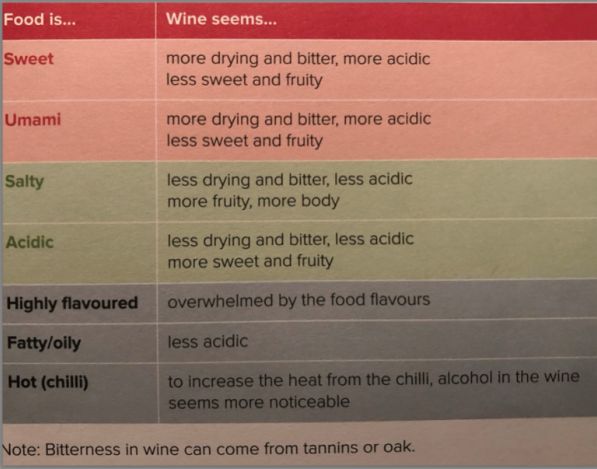
Wine & Spirit Education Trust (WSET) Food and Wine Pairing Chart
For additional information, visit our resources page
